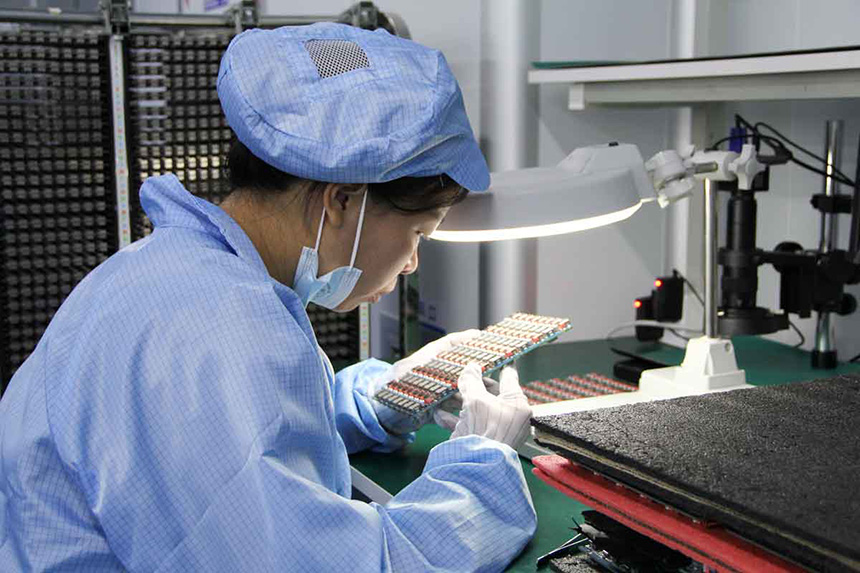Time:2025-08-25 09:54:38 Browse:37
PCB (Printed Circuit Board) is an indispensable part of electronic products, serving as a carrier for connecting various electronic components. PCB assembly is an important step in the PCB manufacturing process. This article will introduce the basic process, precautions, and some common PCB assembly techniques of PCB assembly.

The basic process of PCB manufacturing and assembly includes the following steps:
1. PCB design
PCB design is the first step in PCB assembly, which determines the position and connection method of each component on the PCB. In PCB design, factors such as circuit functionality, layout, and signal integrity need to be considered. The commonly used PCB design software includes Altium Designer, Eagle, etc.
2. Component procurement
Component procurement is the second step in PCB assembly, which includes selection, procurement, inspection, and other stages. In component procurement, factors such as component quality, price, and supply cycle need to be considered. Common channels for purchasing components include Digi Key, Mouser, etc.
3. SMT surface mount
SMT (Surface Mount Technology) is the core process of PCB assembly, which involves attaching components onto the PCB. In SMT mounting, factors such as component position, orientation, and solder pads need to be considered. The commonly used SMT mounting equipment includes mounting machines, ovens, etc.
4. DIP plugin
DIP (Dual Inline Package) plugin is another step in PCB assembly, which inserts components into the PCB. In DIP plugins, factors such as component position, orientation, and pins need to be considered. Common DIP plugin devices include plugin machines, wave soldering, etc.
5. Testing
Testing is the final step in PCB assembly, which verifies the functionality and quality of the PCB. In testing, factors such as component connections, signal integrity, and electrical characteristics need to be considered. Common testing equipment includes multimeters, oscilloscopes, etc.
Precautions for PCB assembly
1. Placement of components
The placement of components is a critical step in PCB assembly, which determines the connection method and signal integrity of the components. In the placement of components, factors such as their position, orientation, and spacing need to be considered. When placing components, attention should be paid to their size and shape to avoid affecting the placement of other components.
2. Welding quality
Welding quality is an important indicator of PCB assembly, which determines the quality and reliability of the PCB. In welding quality, factors such as welding temperature, welding time, and welding agent need to be considered. In SMT mounting, attention should be paid to the size and shape of the solder pads to avoid affecting the soldering quality of the components. In DIP plugins, attention should be paid to the length and shape of the pins to avoid affecting the insertion quality of the components.
3. Testing methods
The testing method is a crucial step in PCB assembly, which determines the functionality and quality of the PCB. In testing methods, factors such as testing equipment, testing procedures, and testing standards need to be considered. During testing, it is important to pay attention to the accuracy and sensitivity of the testing equipment to avoid missed or erroneous measurements.
Common PCB assembly techniques
1. BGA soldering
BGA (Ball Grid Array) soldering is a common SMT surface mount technology that changes the solder pads of components into spherical shapes to improve soldering quality and reliability. BGA soldering requires the use of specialized equipment and processes, such as BGA soldering machines, X-ray inspection, etc.
2. COB packaging
COB (Chip On Board) packaging is a common SMT surface mount technology that directly attaches chips to PCBs to reduce packaging volume and improve reliability. COB packaging requires the use of specialized equipment and processes, such as COB surface mount machines, gold wire soldering, etc.
3. THT plugin
THT (Through Hole Technology) plugin is a common DIP plugin technology that passes the pins of components through the PCB to improve plugin quality and reliability. THT plugins require specialized equipment and processes, such as plugin machines, wave soldering, etc.
Conclusion
PCB assembly is an important step in the PCB manufacturing process, which determines the quality and reliability of the PCB. In PCB assembly, attention should be paid to the placement of components, soldering quality, testing methods, and other aspects. In addition, there are some common PCB assembly techniques such as BGA soldering, COB packaging, THT plugins, etc. I hope this article can be helpful for PCB assembly.